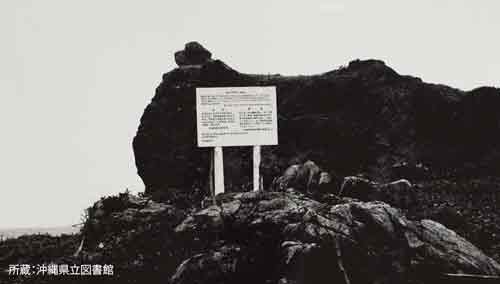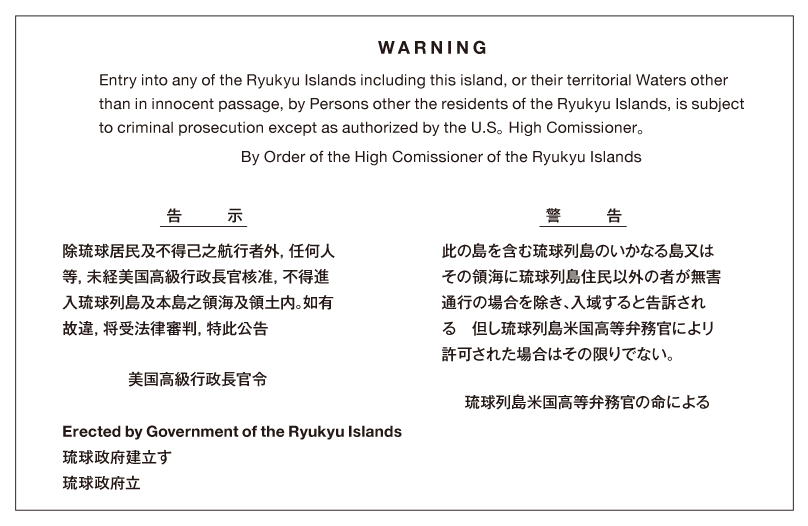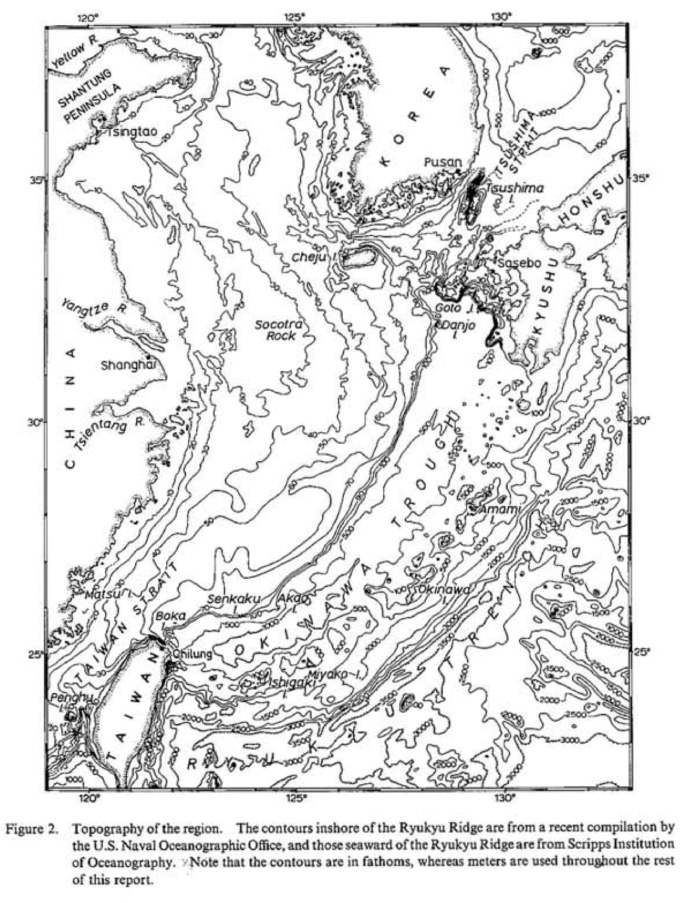Okinawa Reversion
Administrative marker and signboard erected by Ishigaki City (1969)
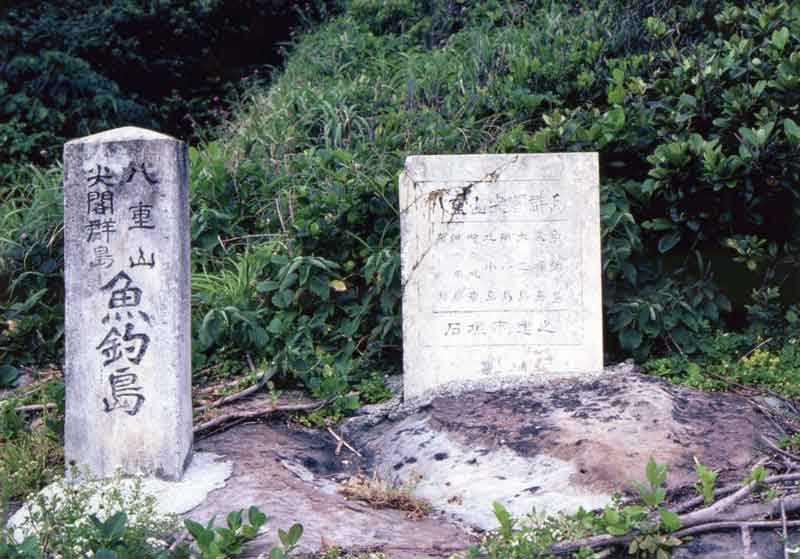
Left : Administrative marker (Uotsuri Island)
Right: Administrative signboard that lists the names of each of the Senkaku Islands
Photo by Yoshima Niiro
The Ryukyu Government cracked down the border incursions in 1970.
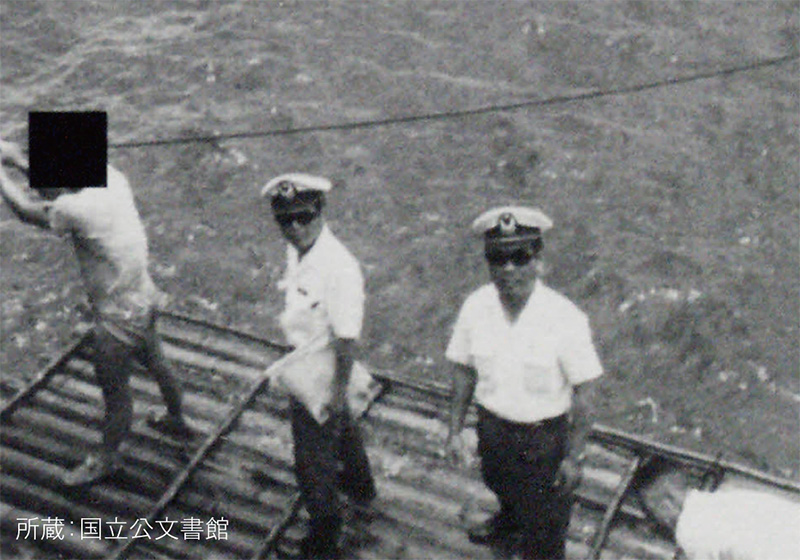
“Report on the border incursions around the Senkaku Islands, August 1968 – July 1970”
[Repositoiry] National Archives of Japan
The Government of the Ryukyu Islands erected warning boards under the name of the US High Commissioner of the Ryukyu Islands (1970)
In September 1968, USCAR proposed to erect warning boards that notified that authorization was required for entry into the Senkaku Islands, as an effective measure to address illegal intruders. In July 1970, the warning boards were erected in the respective Senkaku Islands by the Immigration Agency of the Government of the Ryukyu Islands.
Photo: “Senkaku Island Photography”
[Repository] Okinawa Prefectural Library
May 1969
A report on the potential oil reserves is made public
In 1969, the Economic Commission for Asia and the Far East (ECAFE), the United Nations, publicized a report, stating that: The most favorable part of the region for oil and natural gas is the 200,000 sq. km area northeast of Taiwan; a high probability exists that the continental shelf between Taiwan and Japan may be one of the most prolific oil reserves in the world. A map in the report clearly described the islands as “the Senkaku Islands,” although there was no objection from the PRC and Taiwan.
The PRC and Taiwan suddenly started claiming territorial sovereignty, which they had never done before.
It was not until the 1970s, after the report of the research by ECAFE in the fall of 1968, that the PRC Government and the authority of Taiwan started to make their unique assertions over the Senkaku Islands. They had never expressed their objection to the fact that the Senkaku Islands were included in the area under the execution of the administration by the US in accordance with Article 3 of the San Francisco Peace Treaty.
First official statement by the Government of the People’s Republic of China
Excerpt from the Statement by the Department of Foreign Affairs of the PRC
(December 30, 1971)
…in this argument, the government of the United States and Japan overtly included the Diaoyu Islands among territories to be reversed to Japan. This is a blatant violation of China’s territories and sovereignty...The Diaoyu Islands and other islands have been China’s territory since ancient times. As early as in the Ming Dynasty, they were placed under the areas of China’s naval defenses as affiliated islands of Taiwan, not the Ryukyus which is today’s Okinawa...However, during the First Sino-Japanese War of 1894, Japan illegally stole the Diaoyu Islands and forced the Qing court to sign the unfair Treaty of Shimonoseki that ceded to Japan “the island of Formosa (Taiwan), together with all islands appertaining or belonging to the said island of Formosa”, as well as the Penghu Islands.
Basic position of Japan
There is no doubt that the Senkaku Islands are clearly an inherent part of the territory of Japan, in light of historical facts and based upon international law. Indeed, the Senkaku Islands are under the valid control of Japan.
There exists no issue of territorial sovereignty to be resolved concerning the Senkaku Islands.
Japan will act firmly and calmly to maintain its territorial integrity. Japan continues to strive for peace and stability in the region, which is to be established through the observance of international law.
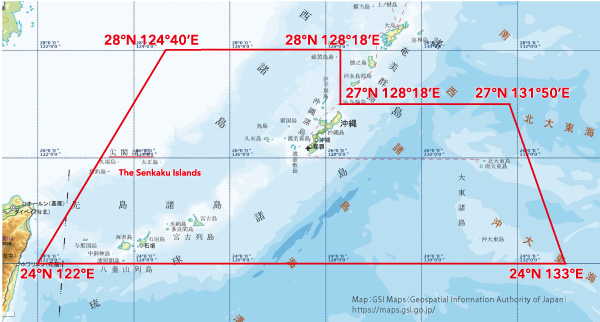
June 17, 1971
The Okinawa Reversion Agreement is concluded.
The area of return includes the Senkaku Islands.
Japan and the US signed the Okinawa Reversion Agreement, in accordance with which the administration over Okinawa was returned to Japan. The Agreed Minutes of the agreement provide that the geographic scope of the return is the area specified by USCAR Proclamation No. 27 (December 25, 1953), which includes the Senkaku Islands.
May 15, 1972
The Okinawa Reversion Agreement enters into effect.
In accordance with the Japan-US Status of Forces Agreement, Kuba and Taisho Islands are provided as bombing ranges.
Upon the entry-into-effect of the Okinawa Reversion Agreement with the US, the administration over Okinawa was returned to Japan. At this time, the Kuba and Taisho Islands were provided to the US Forces as bombing ranges.

